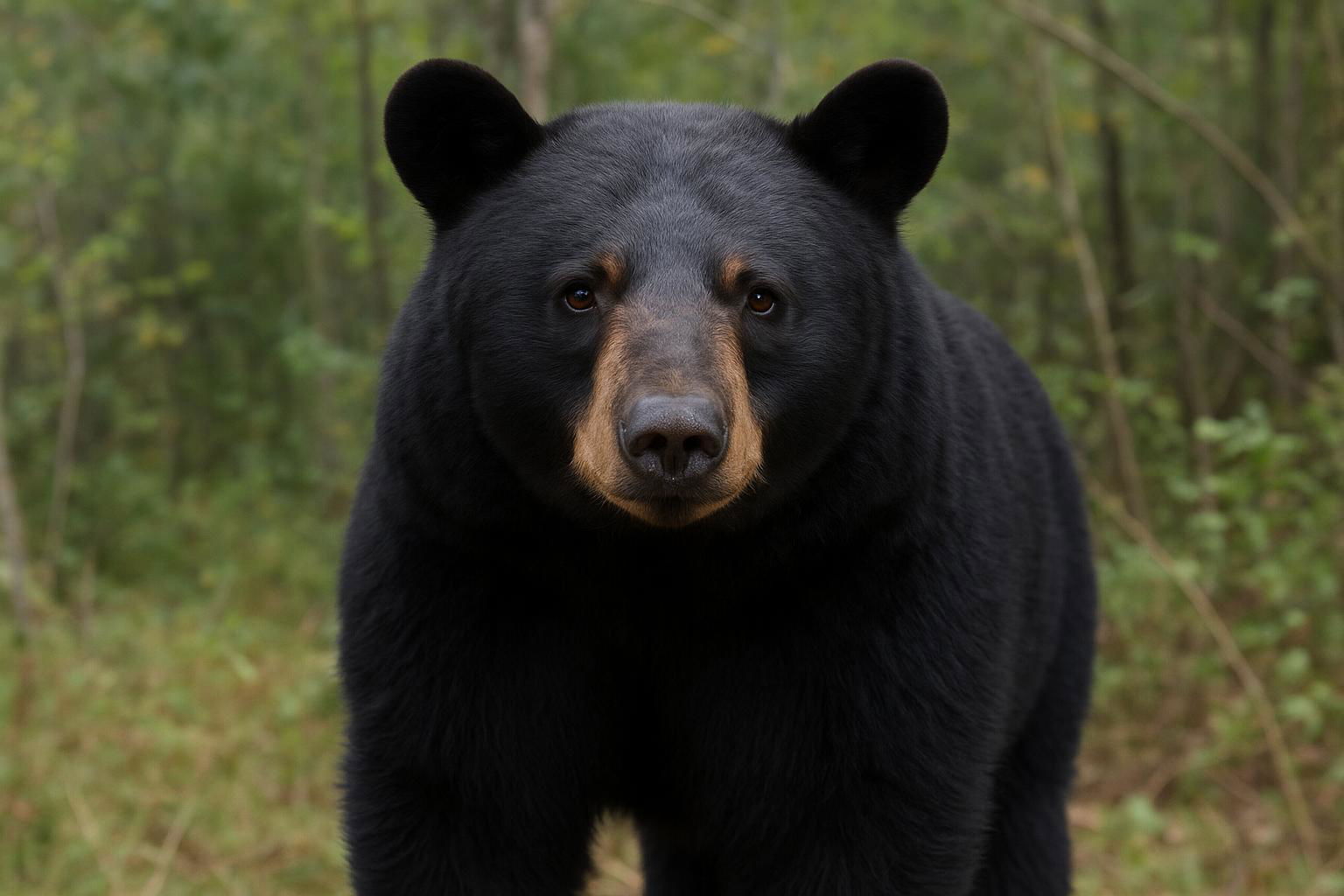
American Black Bear
Ursus americanus
The American Black Bear (Ursus americanus) is a versatile and adaptable species native to North America. This bear is the continent's smallest and most common bear species, typically found in forests, although its range extends from Canada's northern tundra to the swamps of Florida and northern Mexico. Black bears are distinguished by their stocky builds, short tails, rounded ears, and long, curved claws that aid in climbing. Despite their name, these bears exhibit a variety of coat colors, ranging from black to chocolate brown, cinnamon, and even blonde, depending on their geographic location.
Adult males, or boars, generally weigh between 125 to 600 pounds, while females, or sows, are smaller, weighing between 90 to 300 pounds. Black bears are omnivorous creatures; their diet mainly consists of fruits, nuts, plants, and insects, but occasionally they consume fish, carrion, and small mammals. Their acute sense of smell is crucial for foraging. Known for their intelligence and curious nature, black bears are often seen standing on their hind legs to better survey their surroundings.
During winter, black bears enter a state of torpor, a lighter form of hibernation, where they rely on body fat reserves built up in the fall. They are generally solitary animals, except for mothers with cubs or during mating season. Cubs are born in January or February while the mother is in her den and remain with her for about 18 months. The American Black Bear plays a vital ecological role by aiding in seed dispersal and maintaining balanced ecosystems. Despite habitat loss and human encroachment posing challenges, the species remains abundant, with conservation efforts focused on habitat preservation and human-wildlife conflict management.

 All Species & Breeds
All Species & Breeds
 Highland Cattle
Highland Cattle
 Miniature Donkeys
Miniature Donkeys
 All Species Directory
All Species Directory
 Highland Cattle in Virginia
Highland Cattle in Virginia
 Miniature Donkeys in Texas
Miniature Donkeys in Texas












